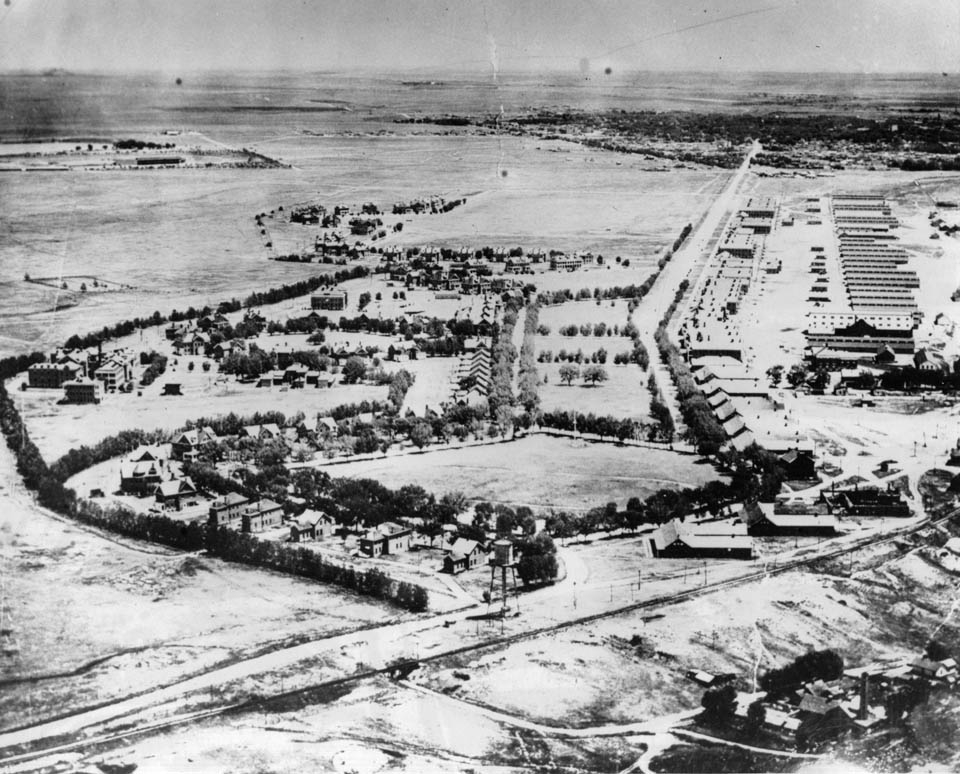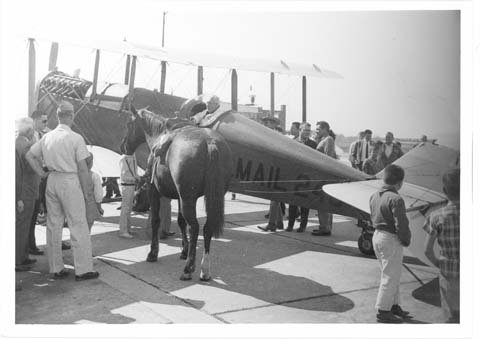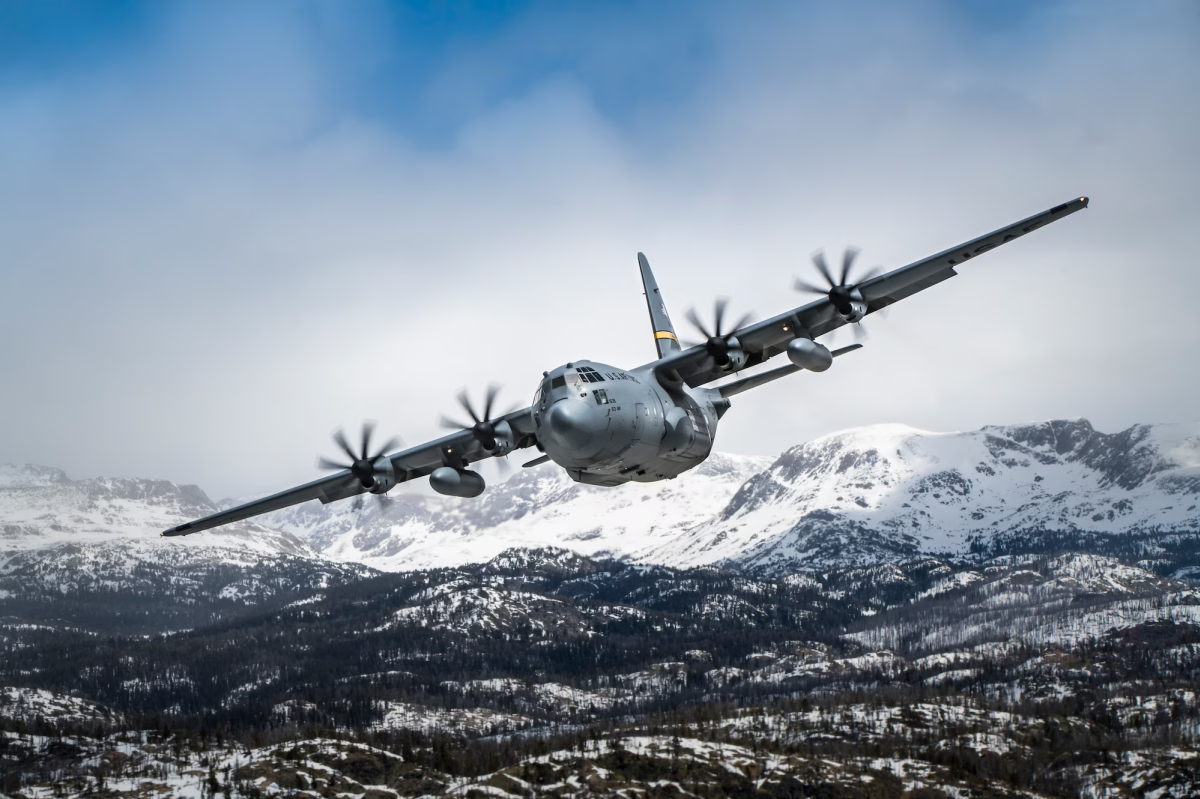<<Read time: 3.5 minutes>>
The Transcontinental Railroad and the Lincoln Highway connected the coasts for trains and automobiles, but Cheyenne, Wyoming, also played a pivotal role for planes. The history of aviation in Cheyenne is often overlooked, typically boiled down to the stewardess training program in the 1930s. However, this September, the Wild West Airshow at the Air National Guard celebrates 101 years of Wyoming's aviation history, paying homage to the adventurous spirits of those before us!
September 25, 1919: The Birth of Cheyenne's Aviation at Fort D.A. Russell
A trajectory-changing telegram arrived at Fort D.A. Russell, announcing Cheyenne would be a major stop in the “Transcontinental Reliability and Endurance Test.” The event was a race of 80 government-owned aircraft across the country and back, the first of its kind in the United States. The problem? Cheyenne had no airfield – and the facility needed to be completed by October 8, a mere two weeks later!

Aerial view of For D.A. Russell, Wyoming State Archives
The community’s social organizations, like the Rotary, the Red Cross and the YMCA, came together to aid the military in the execution of the enormous endeavor. They prepared the 800’ x 900’ area that became known as O’Neil Field (later renamed Wales Field, honoring a casualty of the race). The spot is located just north of the current F.E. Warren Air Force Base Welcome Center, next to I-25. The new airstrip saw 70 planes land throughout the race and only had two non-fatal, wind-related crashes. Upon later inspection, the airfield was considered one of the finest in the country, a true compliment for Cheyenne in aviation and airplane history, and a testament to the efforts of its community.
Post-WWI: Cheyenne's Role in the Transcontinental AirMail Rout
With the Great War freshly finished, civilian use of airplanes increased. Expansion of the airmail service nationwide rapidly became a priority. Wyoming senators went to bat for Cheyenne to beat off those clamoring to make Denver the mid-country stop for the new Transcontinental AirMail Route. The residents of Cheyenne came together and funded plans to expand Wales Field and add infrastructure for the mail system, even without final approval from the government. However, on July 25, 1920, bad news arrived from the War Department – the land at Fort Russell was being reallocated for additional living quarters, and the airstrip could not be used for the airmail program. Cheyenne ran the risk of losing this prestigious designation to Denver.
In less than a week, construction began on a plot of land that had been previously surveyed for training purposes for the war. Situated just east of Sloan’s Lake and north of the brand-new Pershing Heights neighborhood, the land was ideal for building another airstrip. Cheyenne breathed a sigh of relief when they received official approval and construction kicked into high gear.
September 8, 1920: The Airmail Flight
Only eleven months from the initial request for the airstrip at Ft. Russell and six weeks from being forced to relocate the airport, the first airmail plane took off with 16,000 letters on board, flown by Buck Heffron. The four hundred pounds of mail had been delivered via train the night before to be flown to Salt Lake City, Utah, for the next leg of its trip. The new network of flights shortened the coast-to-coast delivery time by 48 hours and only cost the sender an additional two cents!

Biplane Air Mail carrier, Cheyenne, Wyoming, Wyoming State Archives
For much of the next three decades, Cheyenne stood as the Rocky Mountain capital of the aviation industry. Boeing Air Transport, the largest airline in the United States (later to become a part of United Airlines), established its headquarters here in 1927, and the world’s first stewardesses were trained in Cheyenne beginning in 1930. During World War II, Fort Warren and the airport played a pivotal role in the training efforts, and the airport became a common stop for well-known aviators like Charles Lindbergh and Amelia Earhart.
Modern-Day Cheyenne: The Continuing Legacy of Aviation in Wyoming

C-130 with Wyoming Air National Guard 153rd Airlift Wing
Over a century from where we began, the airport plays a crucial role in the Cheyenne community, as well as Cheyenne history. Home to the Wyoming Air National Guard and Army Guard and the 153rd Airlift Wing, the hum of C-130s flying over Cheyenne has become a part of the city’s soundtrack. This fall, the Wild West Airshow allows attendees to revisit the past, watch gravity-defying aerial stunts and get up close and personal with some of the aircraft that shaped our aviation history.
Love Cheyenne history? Check out our other posts here!

